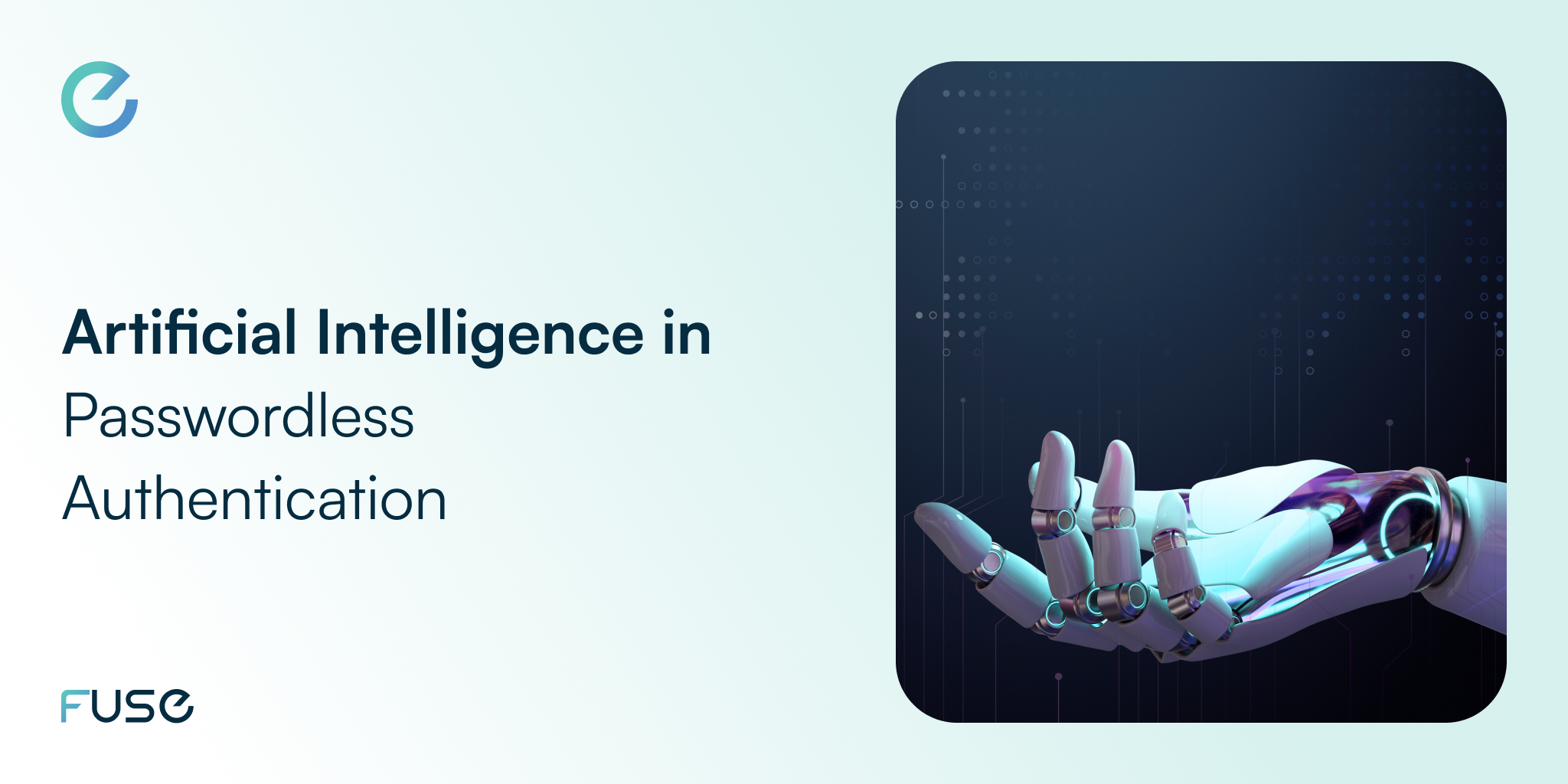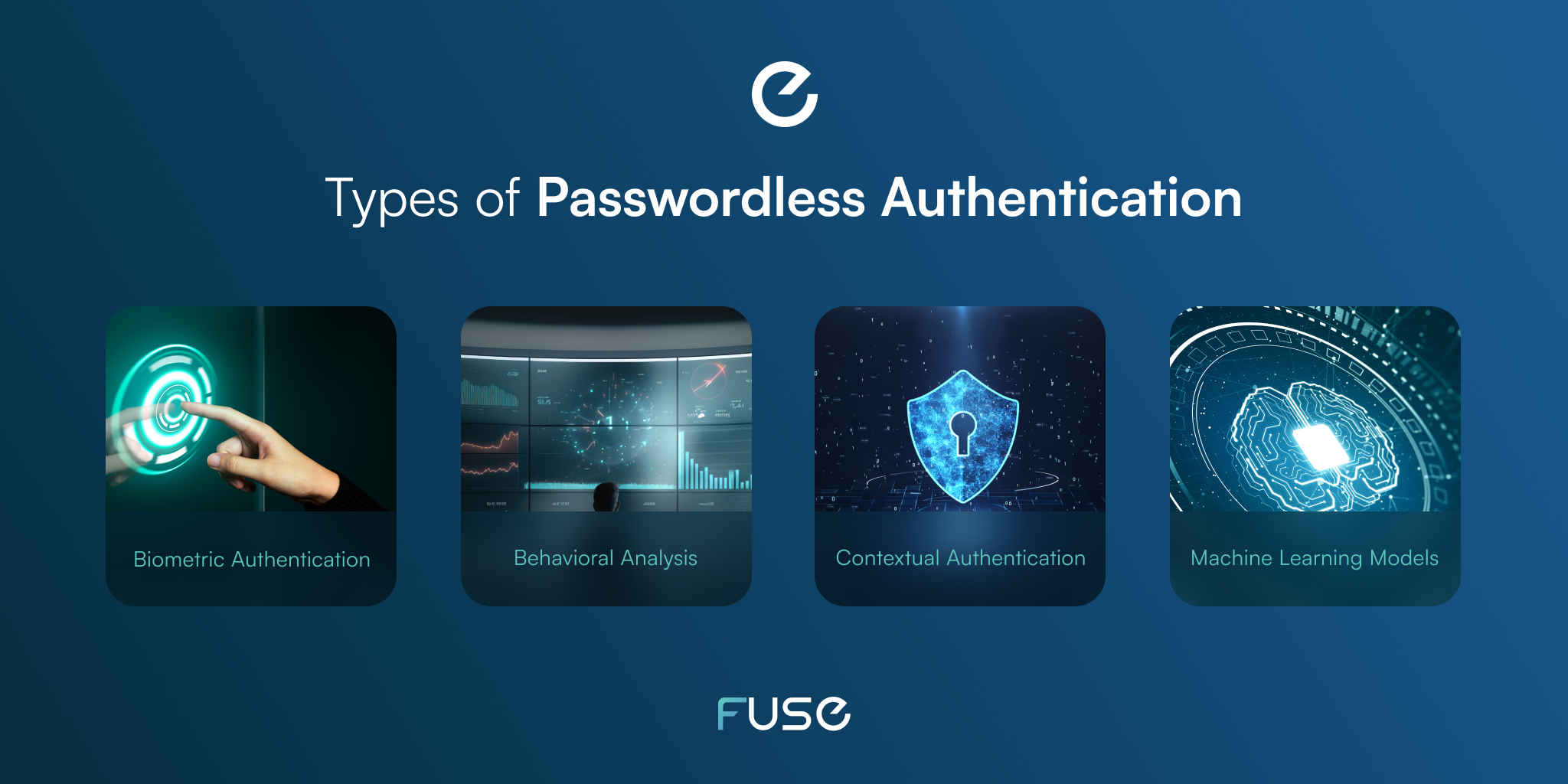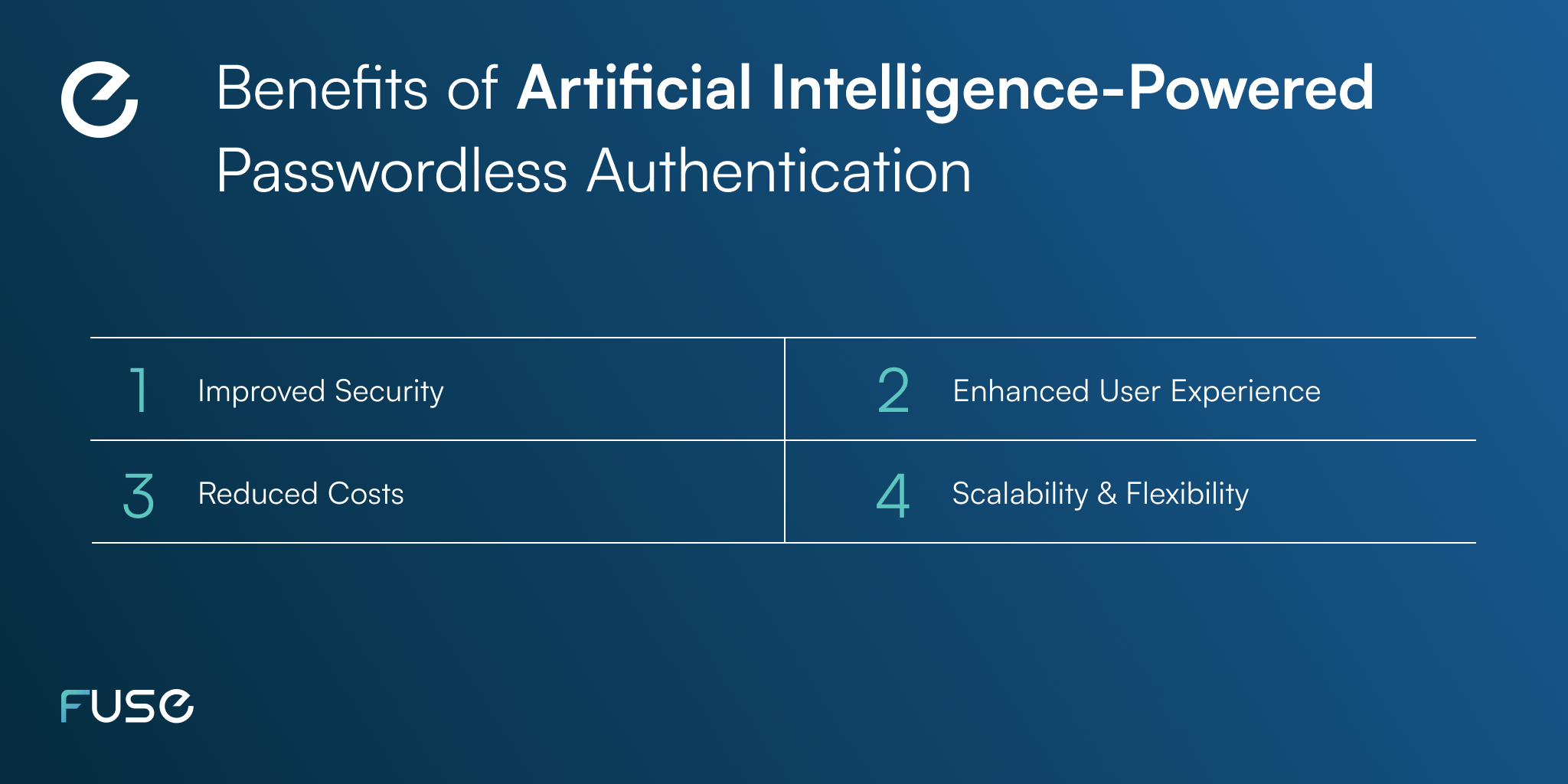Artificial Intelligence in Passwordless Authentication


In today’s digital era, organizations need secure and convenient authentication methods. Traditional password-based systems have several limitations that make them vulnerable to possible cyber-attacks, or they are not appealing anymore because of factors such as the increasing complexity of password requirements and the juggling between multiple passwords to access various applications and platforms.
As a result, the demand for passwordless authentication solutions has grown exponentially. While passwordless authentication is a fantastic method on its own, Artificial Intelligence (AI) can transform it into a game-changing technology in this domain, offering innovative approaches to enhance security while improving the user experience.
In this blog, we will explore the role of Artificial Intelligence in passwordless authentication and its benefits for both users and organizations.
The Limitations of Password-Based Authentication
Before we dive into the topic, why is passwordless authentication even needed?
As we all know, passwords have long been the standard authentication method. This began to change since the traditional systems suffer from numerous shortcomings. Users often choose weak passwords that are easy to guess or crack, leaving their accounts vulnerable to unauthorized access.
Another problem is that people tend to reuse passwords across multiple platforms, amplifying the risk that multiple accounts are compromised because of a single data breach. These issues needed to be addressed by organizations to protect sensitive information and maintain the trust of their users.
Introducing Passwordless Authentication
Enter passwordless authentication. This login method eliminates the need for traditional passwords, offering alternative methods that are secure and user-friendly.
Passwordless authentication is a security protocol that enables users to log in to their accounts without relying on traditional passwords. Instead, passwordless authentication works with alternative authentication methods such as biometrics, security keys, or one-time codes.
With passwords out of the way, users need to provide some form of verification. These include fingerprint scans, face recognition, or push notifications on their phone.
By leveraging Artificial Intelligence – the ability of digital computers or computer-controlled robots to perform tasks usually associated with human intelligence – the authentication experience can become even more seamless and robust.
Let’s delve into some of the AI-powered approaches used in passwordless authentication.
Artificial Intelligence in Passwordless Authentication

- Biometric Authentication
Biometric authentication utilizes unique physical or behavioral characteristics of individuals to verify their identity. AI algorithms analyze and match biometric data captured from fingerprints, facial features, voice patterns, or even iris scans.
These methods offer a high level of security since biometric data is difficult to forge or replicate. AI-driven biometric systems continuously learn and adapt to improve accuracy and resilience against spoofing attacks.
- Behavioral Analysis
Artificial Intelligence can also analyze user behavior patterns to authenticate individuals. By capturing and analyzing various parameters, such as typing speed, mouse movements, or touch gestures, AI algorithms build a unique user profile.
This approach ensures continuous monitorization throughout a user session, detecting anomalies and identifying potential threats.
- Contextual Authentication
Contextual authentication leverages AI to assess the context of authentication attempts. By analyzing factors such as device information, geolocation, IP addresses, and user activity patterns, AI algorithms can determine the legitimacy of an authentication request.
If the context seems suspicious or deviates from the norm, additional verification steps may be triggered.
- Machine Learning Models
Machine Learning (ML) plays a crucial role in passwordless authentication. Trained accordingly, ML models can recognize patterns and make predictions based on historical data. By analyzing user behavior, device information, and contextual data, the models can detect anomalies and identify potential threats.
ML algorithms can also adapt and evolve, continuously improving their accuracy and response to new attack vectors.
Benefits of Artificial Intelligence-Powered Passwordless Authentication

Implementing Artificial Intelligence-powered passwordless authentication offers several benefits for both users and organizations, such as:
Improved Security: AI-driven methods provide a higher security level than traditional password-based systems. Biometric authentication, behavioral analysis, and contextual authentication make it significantly harder for malicious individuals to gain unauthorized access. The uniqueness and complexity of biometric data, coupled with the ability to detect anomalies and unusual behavior greatly enhance security.
Enhanced User Experience: Passwordless authentication simplifies the user experience by removing the need to remember or set up complex passwords. This reduces friction and frustration associated with forgotten passwords or frequent password resets. Users can authenticate themselves seamlessly through their unique biometric traits or behavior patterns, resulting in a smoother and more convenient login process.
Reduced Costs: Password-related issues, such as forgotten passwords or password resets, may turn into a financial burden for organizations. By implementing passwordless authentication, you can substantially reduce these costs. Additionally, passwordless methods eliminate the risk of password-related attacks, minimizing the financial impact of data breaches and potential legal consequences.
Scalability and Flexibility: AI-powered authentication methods can be easily scaled to accommodate the needs of organizations of all sizes. Whether it is a small business or a large enterprise, you can tailor passwordless solutions to fit specific requirements. Moreover, Artificial Intelligence algorithms can adapt to new threats and attack vectors, ensuring continuous protection against evolving security risks.
Artificial Intelligence in Passwordless Authentication – Conclusions
Artificial Intelligence is revolutionizing the landscape of passwordless authentication, providing robust security measures while enhancing the user experience.
Biometric authentication, behavioral analysis, contextual authentication, and machine learning models are a few examples of AI-powered approaches that offer stronger security, reduce costs, and improve scalability.
By adopting passwordless authentication, organizations can protect sensitive data and maintain user trust in an increasingly complex digital world. As Artificial Intelligence continues to evolve, we can expect even more innovative solutions that will redefine the future of authentication.
Fuse and Passwordless Authentication
If you consider adopting passwordless authentication for your organization, we have the ideal solution.
Fuse, our digital integration platform, offers passwordless login capabilities, allowing users access without traditional passwords.
It works by creating new Identity Provider (IdP) integrations that correspond with the passwordless login method. Instead of traditional passwords, users can use forms of authentication such as biometric data, secure tokens, smart cards, common access cards, authenticator apps, and RFID.
Fuse also allows the merged use of a single account across multiple IdPs. This way, users can link the passwordless login to an existing account to streamline the authentication process and provide a smooth experience across different platforms.
Once a user has authenticated with their existing account, Fuse grants access and authorization based on the security permissions assigned to the account they authenticated with. This ensures that users will only be able to access the features and functionality that they have been granted permission to access, reducing the risk of unauthorized access and data breaches.
Among the methods Fuse uses for passwordless authentication, we find biometric authentication, secure tokens, smart cards, common access cards (CAC), authenticator apps, and RFID.
Fuse provides a wide range of passwordless login options, intending to meet the security needs of different organizations and industries. These capabilities ensure that user interactions are safe and secure, reducing the risk of security breaches and providing a better user experience.
Interested in trying Fuse out? Feel free to request a demo and we’ll provide customized and secure solutions.
Sources:


















